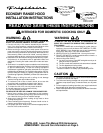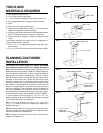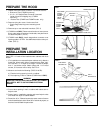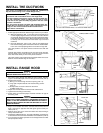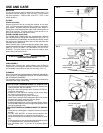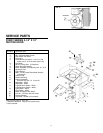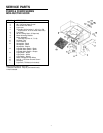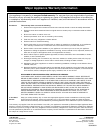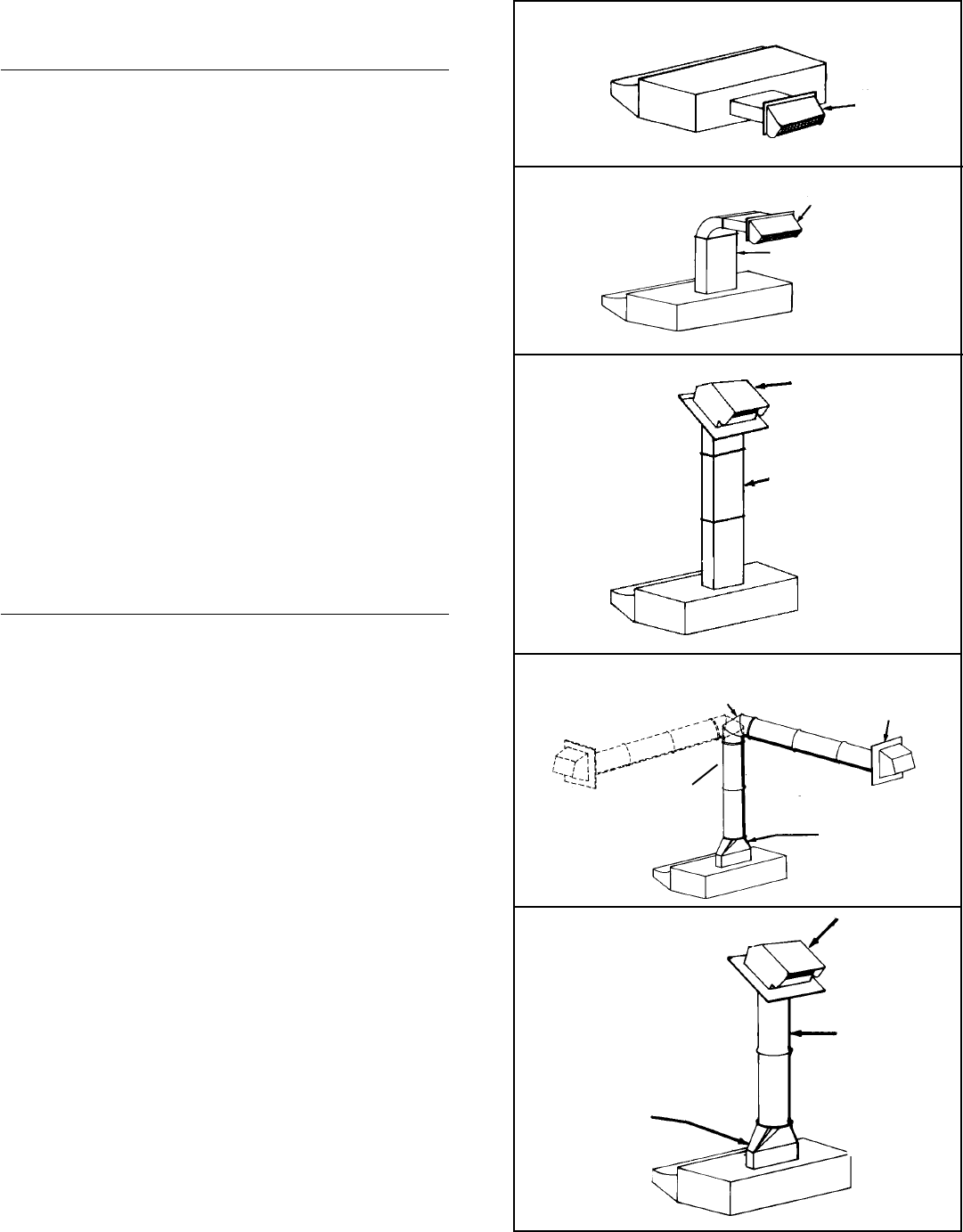
2
6" ROUND
DUCT
WALL CAP
WALL CAP
3-1/4"
X 10" DUCT
ROOF CAP
3-1/4"
X 10" DUCT
ADJUSTABLE ELBOW
WALL CAP
TOOLS AND
MATERIALS REQUIRED
❏ Drill, electric or ratchet drive
❏ 1/8" Drill bit for drilling pilot holes
❏ 1-1/4" wood bit for drilling electrical wiring access hole
❏ One straight blade and one phillips head screwdriver
❏ Pliers
❏ Pencil and ruler and/or tape measure
❏ Saber saw or keyhole saw for cutting 1" x 2" wood strips to
length and cutting wall or cabinet openings
❏ Caulking, metal snips, duct tape, duct (with elbows and tran-
sition, if necessary) and roof or wall cap, as required
❏ Electrical wiring and supplies of type to comply with local
codes
The following materials are required only for installations on
recessed bottom kitchen cabinets:r Ducted
❏ Two 1" x 2" x 12" (approximate length) wood strips (pur-
chase locally)
❏ Four 1-1/4" long flat head wood screws (purchase locally)
PLANNING DUCTWORK
INSTALLATION
(This section for F30WV hoods only. F30WR and F24WR
hoods skip this section and go on to “Prepare the Hood”.)
Begin planning ductwork by deciding where the duct will run
between the range hood and the outside. For best performance,
use the shortest possible duct run and a minimum number of
elbows. There are several choices shown - FIGS. A - F below.
FIG. A. Ducting directly through the wall (for range hoods
mounted on an exterior wall). Shown are two ways to duct
through an outside wall. If a wall cap is used directly off the
back of the hood, special care must be taken to make sure that
the damper in the damper/duct connector on the hood and
damper in the wall cap do not interfere with each other when
the hood is operating. This could result in either inadequate air
delivery or backdrafts. If this condition does exist, remove the
hood damper flap. Sometimes when using a wall cap it is easier
to duct vertically and then use an elbow as shown in FIG. B.
In more complex ducting situations, a 3-1/4" x 10" rec-
tangular ducting range hood (F30WV hood) can be converted
to a round duct by means of a transition.
FIG. C. Ducting straight up through the roof using
3-1/4" x 10" rectangular duct (for single story installations -
F30WV hood only).
FIG. D. Ducting between the ceiling joists (for multi-story instal-
lations) or through the soffit space above the cabinets (where
the soffit connects to an outside wall).
FIG. E. Straight up through the roof using 6" round duct (for
single-story installations).
FIG. B
FIG. C
FIG. D
FIG. A
3-1/4" X 10" TO 6"
ROUND DUCT
TRANSITION
FIG. E
6" ROUND
DUCT
ROOF CAP
3-1/4"
X
10" TO 6"
ROUND DUCT
TRANSITION



